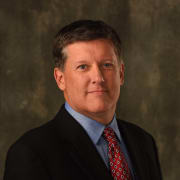PGA of America Remains Noncommittal on Golf Ball Rollback
More Weekly Read: Zach Johnson has a Koepka Problem | Cam Smith is (Possibly) Back | Fore! Things
ROCHESTER, N.Y. — The Modified Local Rule that the United States Golf Association and R&A proposed in March is still under review and part of a comment period that will be ongoing for months. No decisions will be made until all the feedback is given, and even if the rule—which would limit the distance a golf ball can travel for elite players—is enacted, it won’t start until 2026.
That doesn’t mean it won’t be controversial in the meantime. There is a lot at stake for players who might need to get used to a new golf ball. Golf ball manufacturers and equipment makers are vehemently opposed.
But the game’s stewards—perhaps too late—have grown concerned about the viability of old school golf courses, the constant lengthening and tweaking of them for championship play, and how a good bit of the skill—hitting long iron shots to par-4s—has been eliminated.
It makes for an interesting debate, and has put both the PGA Tour and the PGA of America in a tough spot.
Both have remained noncommittal to this point. They know that the majority of their memberships do not want a ball rollback. And yet, do they want to go against the governing bodies?
"We’re not rushing to make a decision until we know exactly what is going to take place," said Kerry Haigh, the PGA of America’s chief championships officer.
"I would just say it's not an us-against-them sort of thing," said Seth Waugh, the PGA of America’s CEO. "This is very interactive, and the ruling bodies have been great about reaching out and having conversations and listening. We're glad they've left the recreational game alone because we think now is not a time to make it harder or less fun—while we're finally growing in a way that we want to grow.
"We're struggling with bifurcation case, like a lot of folks are, in the sense we think that's an integral part of the game that we can all test ourselves against others. And frankly, where does it stop and start? Would we be in the position of kind of being the policemen on that, and we struggle with that a little bit, as well."
Waugh’s points are all valid. Where to draw the line with who plays what ball is a big part of the consideration here.
But it’s clear where the USGA and R&A stand. And the Masters last month all but joined them. Would the PGA of America not employ the local rule, thus meaning three of the majors are played differently than one? (The PGA of America, for example, allows range finders and does not invoke the local rule requiring one ball. So there is precedent to be different.)
And would the PGA Tour not use it, meaning different rules for three of the majors but not every week? It will be fascinating to see how this plays out.
